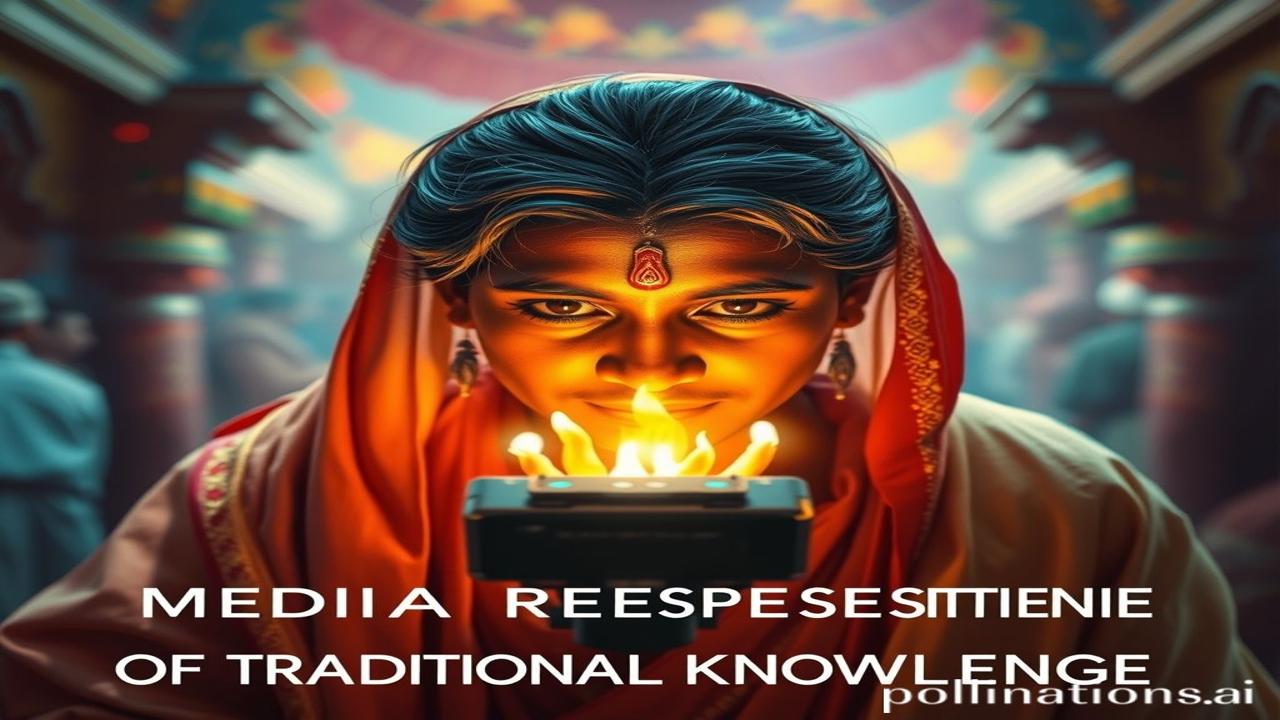Khoi Hui Virasat, Bikta Hua Sach: Media and Traditional Knowledge
Kabhi socha hai, ek purani haveli ki deewaron mein kya raaz chhupe hote hain? Ek buzurg dadi ki kahaniyon mein kitni sadiyon ka gyaan samaaya hota hai? Waqt ki dhool mein dabi, hamari traditional knowledge, ek anmol khazana hai. Lekin aaj, is khazane ko media kaise dikhata hai? Kya woh iski asliyat ko bachata hai, ya phir sirf bikau masala banata hai? Let’s dive in, friends!
Historical Roots: What is Traditional Knowledge?
Traditional Knowledge, yaani paramparik gyaan, woh hai jo hamare purvajon ne sadiyon se jama kiya hai. This includes everything from Ayurveda ki jadi-butiyon se ilaaj karna, to pottery banane ke techniques, farming ke tareeke, aur mandir ki architecture. Yeh koi bookish knowledge nahi hai; it’s lived knowledge, jo generations se practice aur oral traditions ke through pass on hoti aayi hai. Imagine, a farmer in Rajasthan knowing exactly when to sow seeds based on the moon’s phases, passed down from his forefathers! This is traditional knowledge in action. It’s been happening for centuries, evolving with the environment and the people.
Why is it so Important?
Because it’s our dharohar, our heritage! Yeh sirf gyaan nahi hai; it’s our identity, our connection to the past, and a roadmap for a sustainable future. Traditional Knowledge often holds the key to solving modern-day problems, from climate change to food security. Think about it – ancient water harvesting techniques can help us conserve water today! It’s about understanding our relationship with nature and living in harmony with it.
Zameeni Sach: Log Aur Jeevan – A Glimpse into the Past
Imagine a village in Kerala, 500 years ago. Ma Amrita, a Vaidya (Ayurvedic doctor), is carefully grinding herbs with a mortar and pestle. The air is thick with the scent of sandalwood and spices. She’s preparing a medicine for a young boy who is unwell. Her knowledge comes from her grandmother, who learnt it from her grandmother. This knowledge is her shakti. Meanwhile, in the courtyard, women are weaving intricate patterns on handlooms, each design telling a story of their ancestors. Men are tending to the rice fields, using age-old techniques to irrigate the land. Yeh tha us zamane ka zameeni sach – knowledge as a way of life. No internet, no textbooks, just the wisdom of generations guiding their daily actions.
Today’s Echoes: Cultural Significance & Identity
Aaj, you see remnants of this in our everyday lives. The way we celebrate Diwali, the rangoli patterns we create, the traditional dances we perform, it’s all a reflection of our traditional knowledge. Ayurveda is making a comeback; yoga is a global phenomenon. Even our cuisine – the specific spices used in each dish – is a testament to the knowledge passed down through generations. This is what connects us to Bharatiyata – that sense of Indianness, that unique cultural identity that sets us apart.
Media Representation: Where Does the Problem Lie?
Here’s the sach. Media often presents traditional knowledge in a simplified, romanticized, or even distorted way. They might highlight the “exotic” elements to grab attention, overlooking the depth and complexity of the knowledge. It’s often portrayed as something “ancient” and “primitive,” ignoring its relevance and potential for modern solutions. Sensational headlines, lack of context, and misinformation – these are the dangers. The focus is often on entertainment value rather than accurate and respectful representation.
Examples:
- Ayurveda in Movies: Often portrayed with simplistic solutions and exaggerated claims.
- Tribal Rituals: Shown without proper context, leading to misunderstandings and cultural appropriation.
- Traditional Crafts: Glossed over with a focus on the “aesthetic” rather than the intricate skills and knowledge involved.
Fun Fact or Myth-Buster
Myth: Traditional knowledge is outdated and irrelevant in the modern world.
Truth: Traditional knowledge is incredibly valuable and can offer sustainable solutions to many of our modern challenges. For instance, traditional farming techniques often use less water and pesticides than modern methods, making them more environmentally friendly. Plus, indigenous knowledge systems are crucial for understanding biodiversity and conservation.
Visual & Sensory Layer
Imagine the scent of burning incense during a traditional puja. The cool touch of marble in an ancient temple. The rhythmic sound of drums during a tribal dance. The vibrant colors of hand-painted Kalamkari fabric. These sensory experiences are an integral part of traditional knowledge, and they help us connect with our heritage on a deeper level. The media can use these sensory details to bring traditional knowledge to life, rather than just focusing on the superficial aspects.
Antim Vichar or Uddharan
“Vasudhaiva Kutumbakam” – the world is one family. Traditional knowledge reminds us of our interconnectedness, our responsibility to protect the environment, and our shared humanity. It’s a treasure worth preserving, understanding, and respecting. Let’s hope the media can play a positive role in this journey, showcasing the true essence of our dharohar with integrity and respect. After all, mitti se juda insaan kabhi nahi bhatakta. (A person connected to their roots never gets lost).
